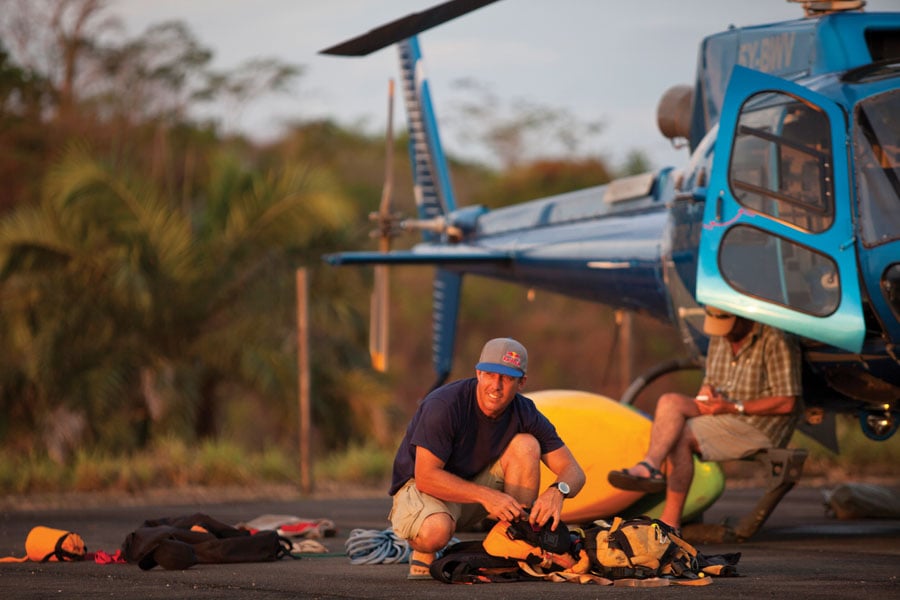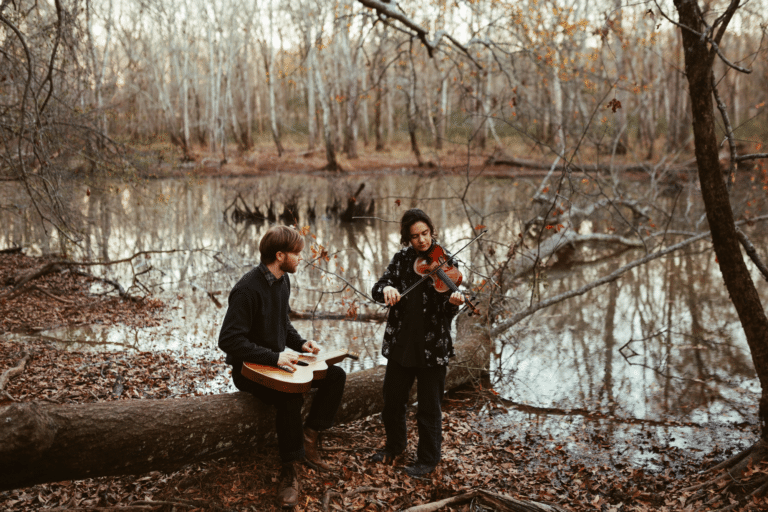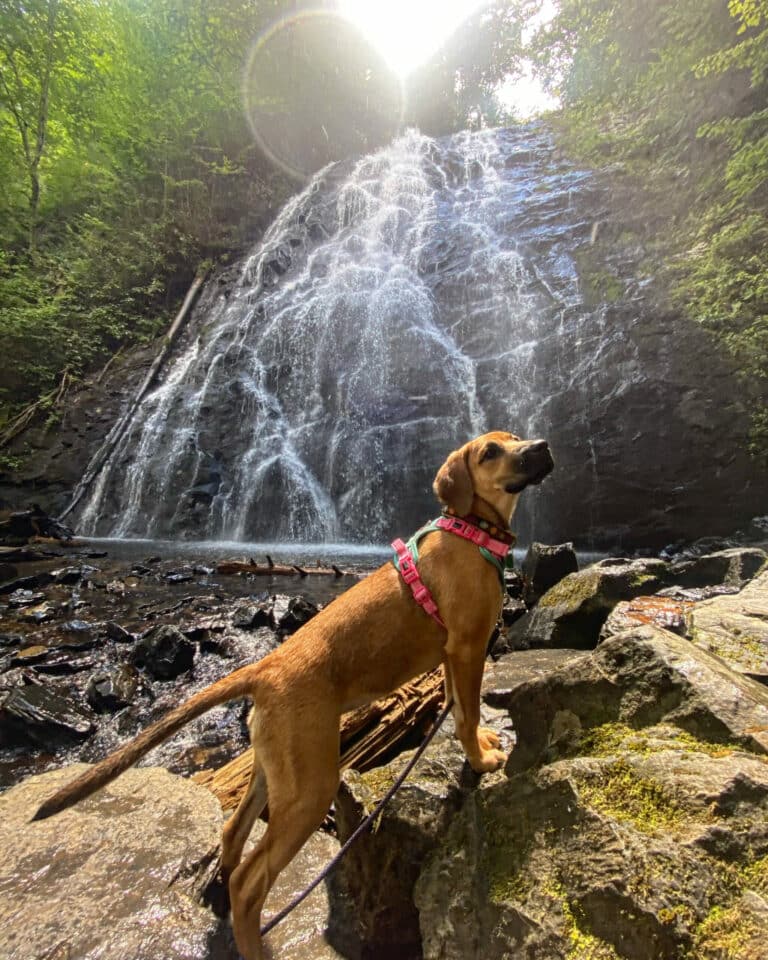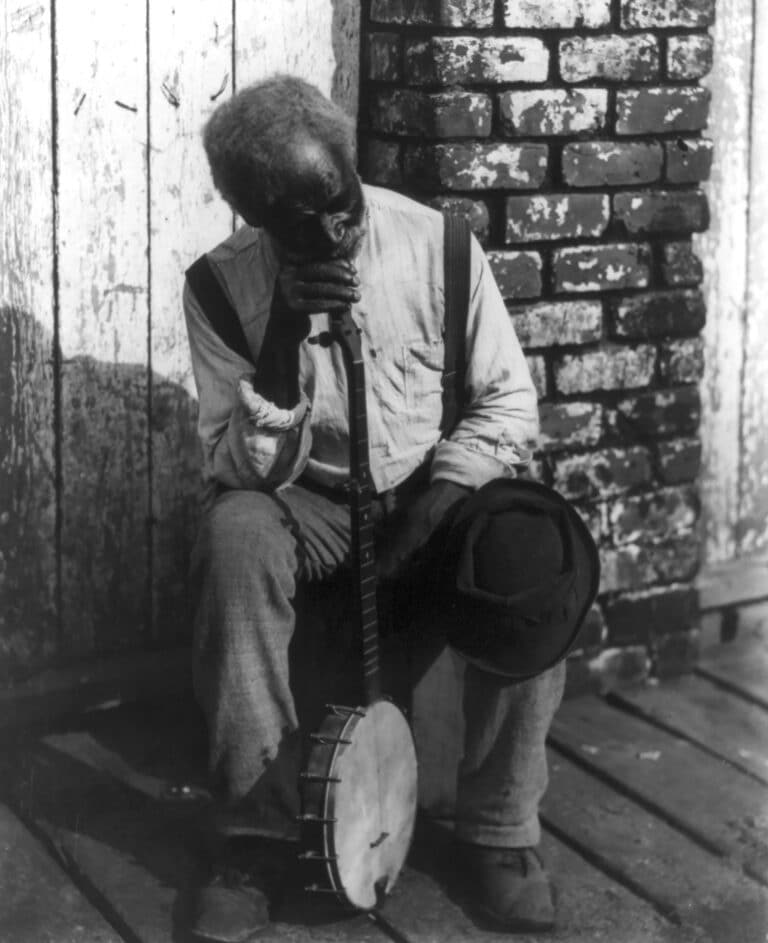At the end of the 2002 first descent down Tibet’s Yarlung Tsangpo River, 26-year-old Steve Fisher was faced with a choice. He could continue following his dream of paddling or settle down into the “real world.” Hearing a quote from The Wanderer changed Fisher’s life forever.
He has since become a renowned paddling athlete and filmmaker, sponsored and working with Red Bull. He shared his experiences and revelations over the last 16 years, where he stands now, and what he’s working on for the future.
How long have you been kayaking?
The first time I kayaked was on my sixth birthday. The kids were told to paddle flatwater, and of course, my buddy and I devised a plan to paddle the rapids. We both swam and had to get rescued.
Since the adults told me I couldn’t kayak, I wanted to kayak. I was excited about it. Once I hit college age, I was an obsessed, avid kayaker and doing it recreationally and competitively.
Talk about the Tsangpo expedition.
I had pursued pro kayaking for four years during the U.S. competition circuit, but it was no way to make a living. I had to work on the Zambezi five months a year, and a student loan needed to be paid. I decided that the Tsangpo would be my last hurrah, and then I’d settle down and get a job.
I was planning to start a business, and I began thinking about the next phase in my life, jotting down my plans on a notepad. Then the land expedition leader read these lines from The Wanderer:
“The years thunder by, the dreams of youth grow dim where they lie caked in dust on the shelves of patience. Before we know it, the tomb is sealed. Where, then, lies the answer? In choice. Which shall it be: bankruptcy of purse or bankruptcy of life?”
At that moment, I thought to myself: screw this, I’m going to follow my passion. I threw that notepad in the fire.
That following year I did a film for Scott Lindgren for $3,000; went straight to the Ford Gorge Games to place first for $12,000. Two days after that, Red Bull offered to sponsor me. I got myself to that moment where I was about to give up on my pursuit, but that quote made me hold on to that idea for a little longer, and it worked out.
When did filming enter into your dream?
I decided that at least for a few years I’d pursue kayaking and find it as a means to travel. As I progressed, I realized we could get sponsors and make a living. Finding films quickly became a way to piece that all together. I decided to make kayak movies, which did relatively well in the paddling scene. They were fairly amateur, like kayak porn, but it was through that form that Red Bull approached me.
So many of the top paddlers also shoot film. What has made yours stand out?
I want kayaking to be portrayed in the most spectacular way possible, which means to do impressive kayaking and shoot film well. I also want the filmmaking world to be impressed by what I shoot.
For example, editing Congo: The Grand Inga Project took six months and all I thought the entire time is that I’m making a film for my mother-in-law. She knows nothing of what I’m doing, and I want her to appreciate it—that’s what drove it. I also was trying to impress her because I was about to propose to my wife.
You’ve got a new paddling project in the works, which is quite different from The Inga Project.
The Dreamline project is an instructional film and something I knew I should do. Kayakers who have become really good eventually move on and leave the limelight, and they take their skills with them. I think that’s unfortunate to lose that level of skill, so I felt I had an obligation to leave that knowledge behind.
This film will differ from other instructional ones in that it will have top athletes like Pat Keller and Dane Jackson. It will be set locally in the U.S. and on the Zambezi. Most importantly, it will be shot well.
You funded the film using Kickstarter?
A pledge of $300 got the backer a date with Pat Keller, Ben Marr or Dane Jackson. We did get one backer, who was a father buying an evening with Ben Marr for his son. The cool part about that was the backer was Piotr Chmielinski, the rafter and coordinator of the first descent of the Amazon, which was captured in a book called Running the Amazon. It was my bible when I was growing up. That was cool that people like him saw the value in what we were trying to do.
What do you see with upcoming filming and kayaking?
I don’t expect paddling to last forever, which is why filming is so important. It’s there to bridge into the next stage of my life when sponsors no longer keep me as a kayaker. I can say I’m a filmmaker, and here’s some stuff that I shot for Red Bull and the like, which is not just kayaking.
I’m editing the King of the Motos competition, my fifth year as their specialty head shooter. I’m diversifying so I can make the transition when the time comes.








